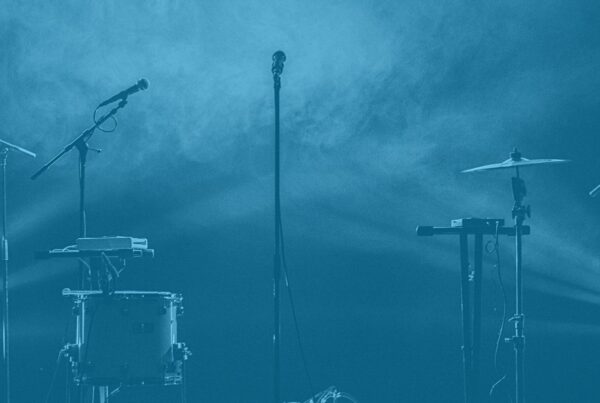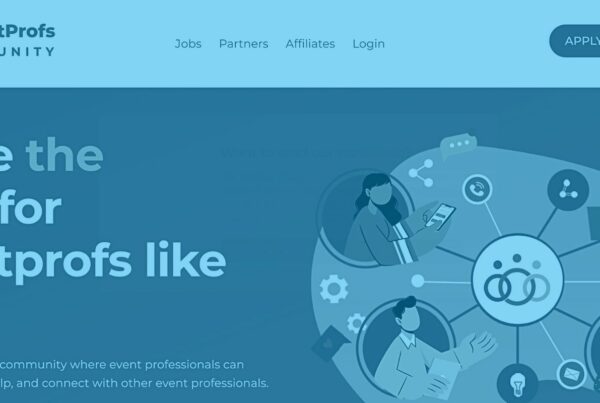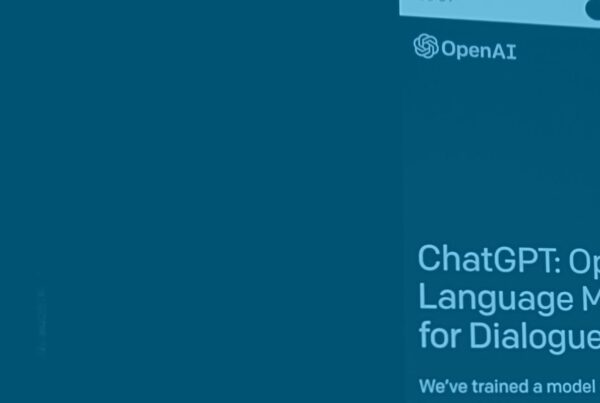Event chatbots are becoming increasingly common in the event industry. While chatbots are helpful when engaging communities during events, they can also be an excellent tool if you want to implement the community model and engage your attendees all year.
Today, Will, Brandt, and Kyle discuss event chatbots in 2022 and the community model with chatbot expert Chuck Elias. They update us on how chatbot technology has evolved in recent years and how you can use event chatbots to successfully engage a community year-round.
The Pandemic Affected Chatbots Too
Brandt jumpstarts today’s discussion by asking Chuck to talk about how 42Chat and its technology have worked through the pandemic over the last couple of years.
Chuck explains his first move was to help event organizers deal with the onslaught of questions they were getting. “We were helping anyone who had a community communicate with that community. Since everyone we were working with already had a live bot, we were able to turn that on and deploy a rapid response bot. That was the first move to see if we could just help the event world respond to the pandemic.”
“Then you realize events aren’t going to come back for a while,” continues Chuck. “That’s when we came up with our HealthShield product. If you think back to that time, many health forms were confirmed on paper. That wasn’t scalable. So we built our HealthShield product, which uses our same AI chatbot platform. We’ve developed those questions over the years, but we started with what we knew how to do well: connect with people over text, provide intuitive ways for people to do what they need to do, and offer ways to scale those tasks with the ability to keep records,” he explains.
Brandt puts forward an important point, “I think there’s a lot of power in using the channels people already use. Don’t take the chance that someone’s not going to see an email.”
Will agrees. “In the events industry, you constantly have to communicate changes. When it comes to emails, everyone wants to make sure it’s on brand, and it’s written properly, but text messaging allows you to put something together that’s short and succinct.”
“That’s the power of having SMS as the channel, and it being something people pay attention to,” adds Chuck. “More important is having built the community in advance so that you can communicate. It’s great to have the channel, but it’s not enough. You have to have the community you’ve actually delivered value to in order to then have them be responsive to and want to listen to what you have to say.”
The Community Model In 2022
Will transitions to the next topic, the community model. “You talked about community and how it’s important to have that for the communications we’ve discussed today. What’s your take on the community model?” asks Will.
Chuck defines a community as a group of people with common interests with one caveat. “They are looking for you to lead,” Chuck says. “If that’s the definition of community, in many cases, we haven’t done that.”
“If you have an annual event and say those attendees are an important community, then why do you stop talking to that community the rest of the year?” continues Chuck. “Why aren’t you actively engaging, getting input, sharing meaningful information, and staying connected with them throughout the year? That’s what community is to us.”
“I think, during the pandemic, we discovered that we actually didn’t have communities. We didn’t have people so connected to our shared interests that they were going to attend the virtual event. They were attending for the experience before, but as casual customers,” he concludes.
Trust and Value Are Foundational
Building trust and delivering value are essential components when building a community open to year-round engagement. For Brandt, a community is all about trust.
“It’s about a group of people that I enjoy hanging out with, share a common interest with, but that I trust,” explains Brandt. “Same with the organizers; if I’m going to give you access to an incredibly powerful and immediate channel like SMS and event chatbots, it’s got to be part of an overall trust with the organizers and event.”
“Pretty much all of our tools and marketing are built around the concept that people ignore us,” says Chuck. “We tell people to assume every single text that’s sent is read. We think about every text we send in terms of trust, value, and action. Is this somebody you want to hear from? Is it something that matters to you? And, is there something you could or should do right now? The value tradeoff of receiving that text gets better because we’re no longer spamming you,” Chuck explains.
Will, agrees. “It has to be about real value, and that’s the first point.”
Community Model: How To Begin
Kyle asks today’s final question, “Brandt, if an event or brand was trying to start a community and engage people longer, where would they start? What advice would you give them to keep going?”
“For me, it starts slow,” Brandt says. “Too much, too fast is where it can feel like spam. Starting in that direction and slowly working your way out. In the communities I’m involved with, whenever I’m making decisions about stuff, I’m asking them. For me, it’s about working with the community and having that two-way discussion.
He compares the community model to the broadcast model. “When you’re using your tools as a broadcast, without getting any interaction back, that’s generally more of the shotgun approach. It should, instead, be about feedback and interaction.
Chuck tells us that sending texts through event chatbots differs from traditional SMS marketing. Community marketing is a different strategy. “That’s no different than an email campaign. We’re not talking about that. We’re talking about introducing your community to a channel we use, where the first thing we do is add value because we answer your questions instantly, 24/7. The more you get your questions answered, the more comfortable you are with the channel and the solution we’re offering,” he concludes.
The Community Model Is Here To Stay
Finally, Brandt suggests you take the community model and apply it to all of your communication channels. “Just imagine if we treated all channels like this,” he says. “All of what we’re talking about today is good for all channels. I think this will be something we continue to come back to year after year.”
As the team signs off, Will wants to remind you to send them your questions and reach out to them on social media using the #eventtechpodcast tag. They love reading what you have to say!








